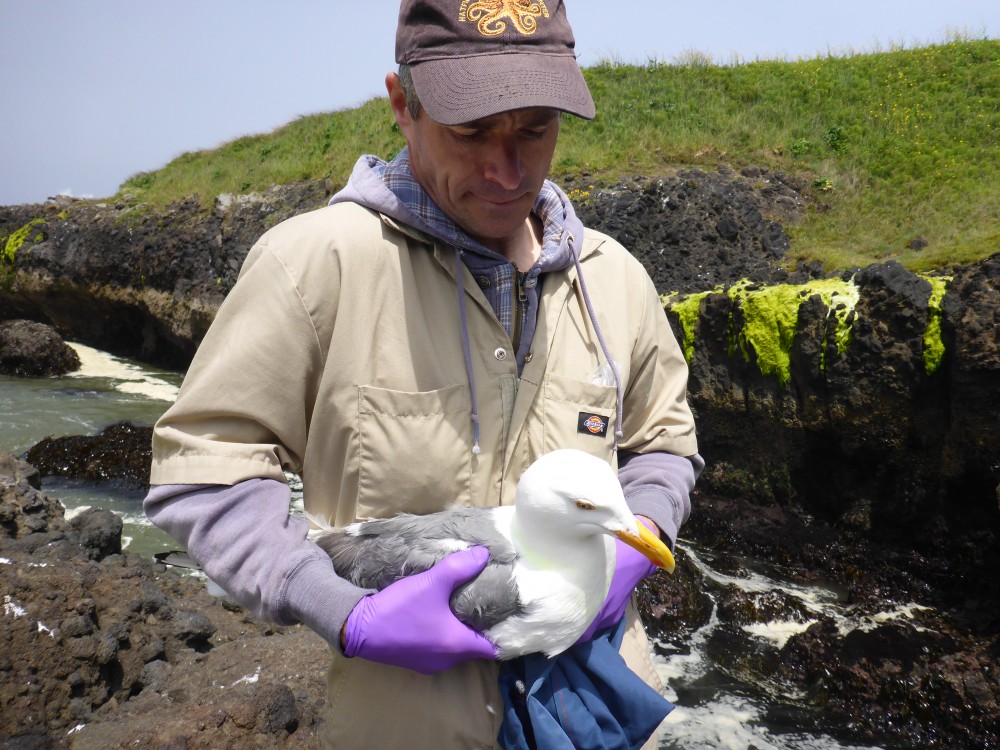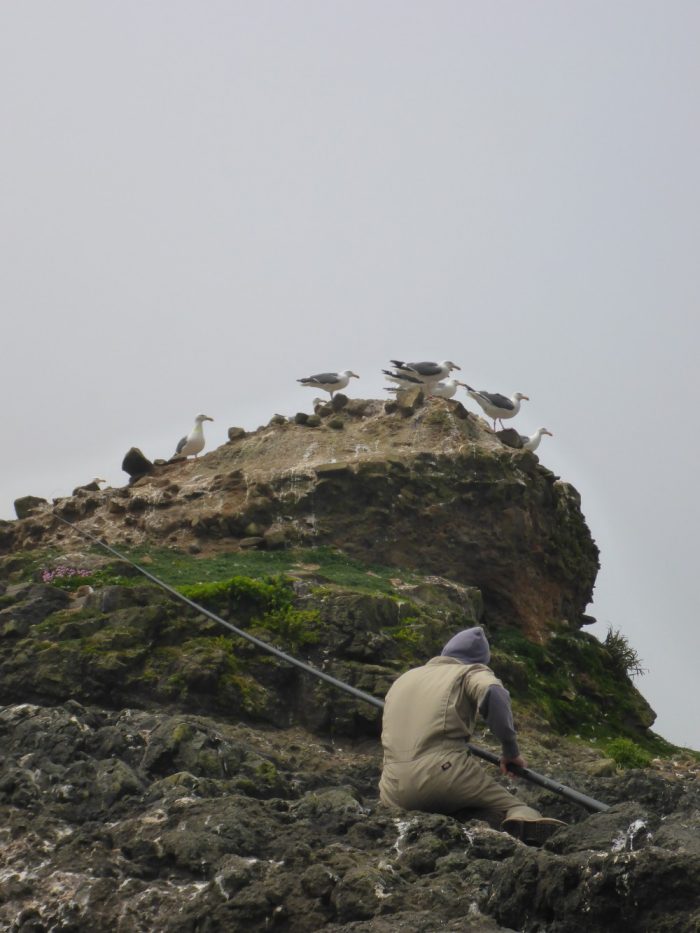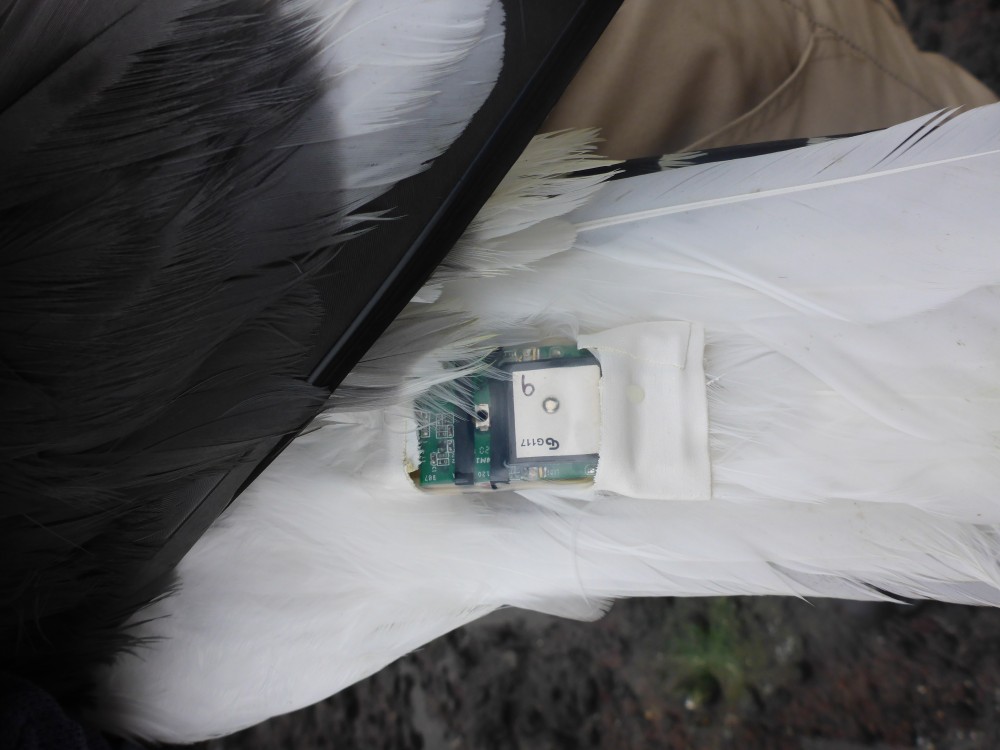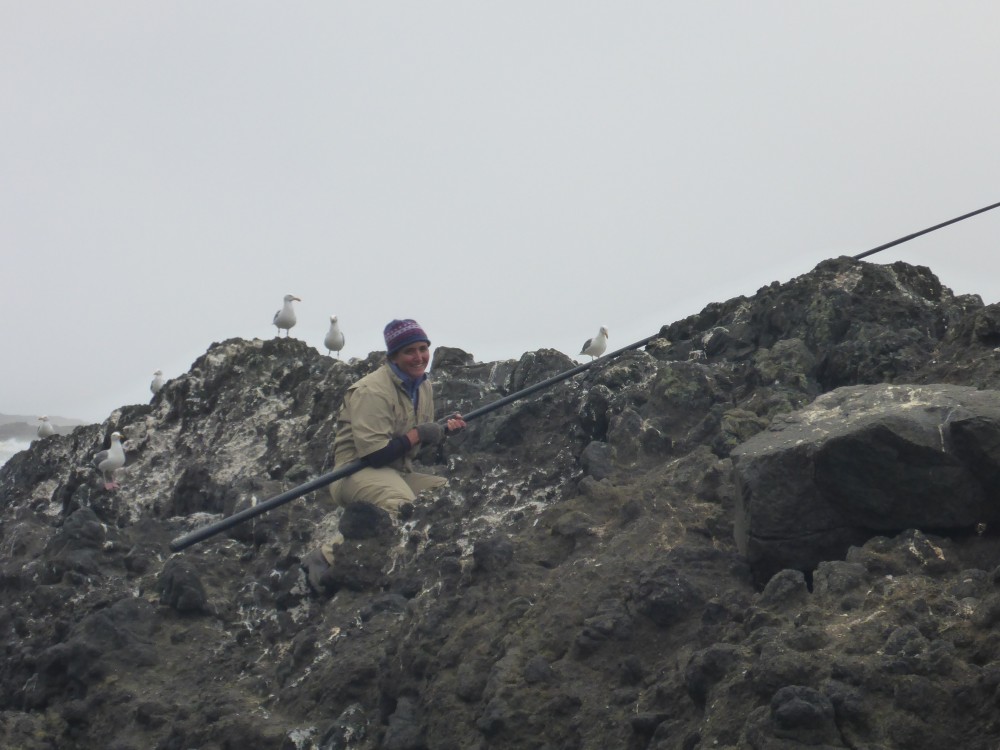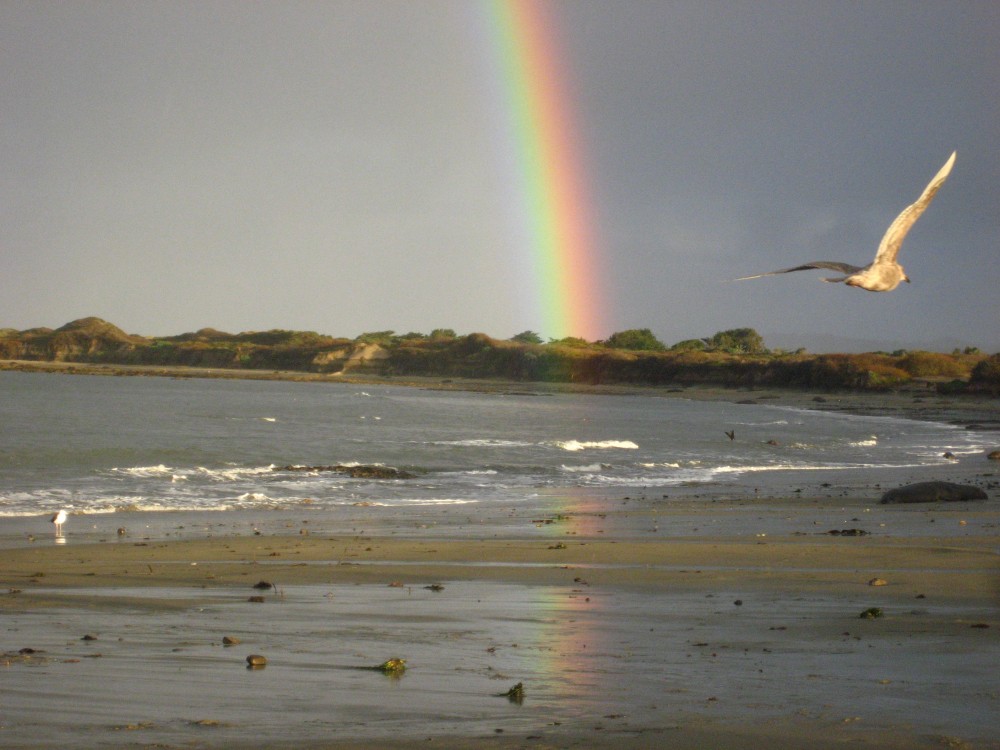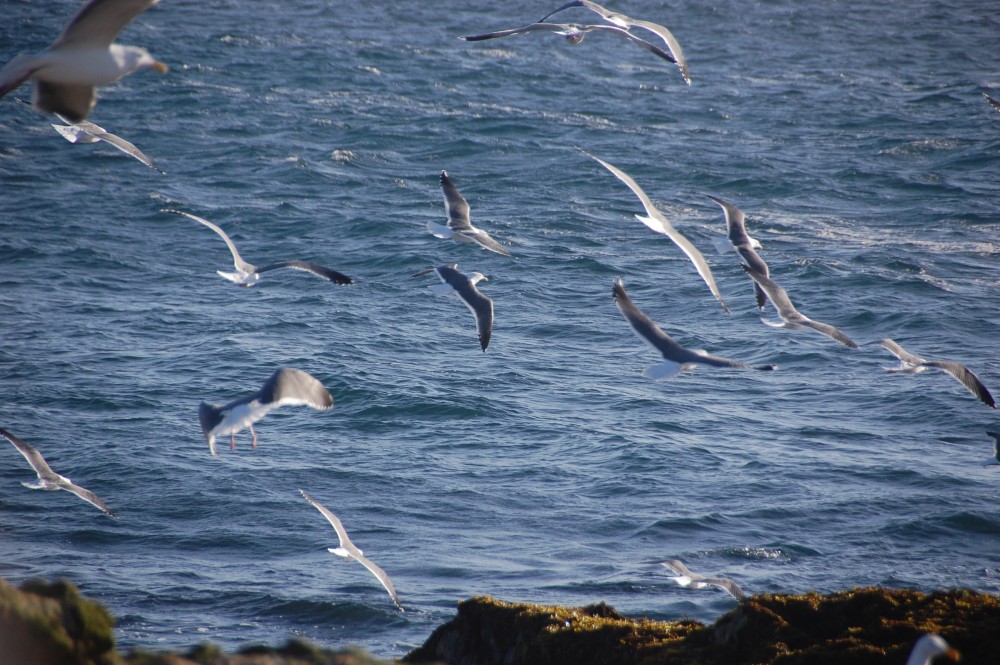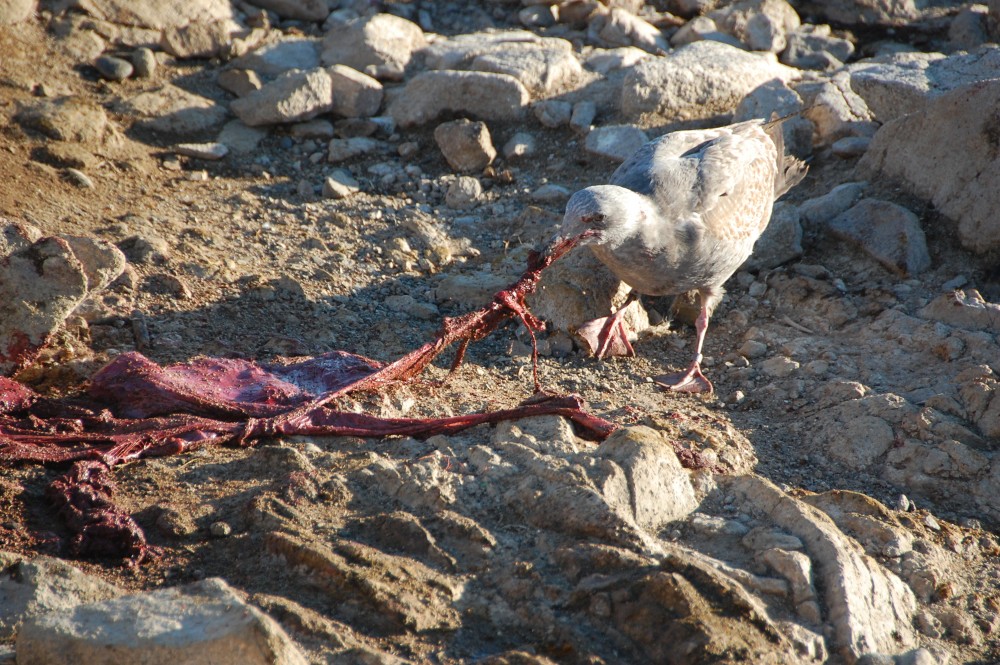By Olivia Hamilton, PhD Candidate, University of Auckland, New Zealand.
The week leading up to my departure from New Zealand was an emotional rollercoaster. Excited, nervous, eager, reluctant… I did not feel like the fearless adventurer that I thought I was. D-day arrived and I said my final goodbyes to my boyfriend and mother at the departure gate. Off I went on my three-month research stint at the Hatfield Marine Science Center.
Some thirty hours later I touched down in Portland. I collected my bags and headed towards the public transport area at the airport. A young man greeted me, “Would you like to catch a taxi or a shuttle, ma’am?” “A taxi please! I have no idea where I am”, I responded. He nodded and smiled. I could see the confusion all over his face… My thick kiwi accent was going to make for some challenging conversations.
After a few days in Portland acclimatizing to the different way of life in Oregon, it was time to push on to Newport. I hit a stroke of luck and was able take the scenic route with one of the girls in the GEMM lab, Rachael Orben. With only one wrong turn we made it to the Oregon coast. I was instantly hit with a sense of familiarity. The rugged coastline and temperate coastal forest resembled that of the west coast of New Zealand. However, America was not shy in reminding me of where I was with its big cars, drive-through everything, and RVs larger than some small kiwi houses.

We arrived at Hatfield Marine Science Center: the place I was to call home for the next quarter of a year.
So, what am I doing here?
In short, I have come to do computer work on the other side of the world.
Dr. Leigh Torres is on my PhD committee and I am lucky enough to have been given the opportunity to come to Newport and analyze my data under her guidance.
My PhD has a broad interest in the spatial ecology of mega-fauna in the Hauraki Gulf, New Zealand. For my study, megafauna includes whales, dolphins, sharks, rays, and seabirds. The Hauraki Gulf is adjacent to Auckland, New Zealand’s most populated city and home to one of our largest commercial ports. The Hauraki Gulf is a highly productive area, providing an ideal habitat for a number of fish species, thus supporting a number of top marine predators. As with many coastal areas, anthropogenic activities have degraded the health of the Gulf’s ecosystem. Commercial and recreational fishing, run-off from surrounding urban and rural land, boat traffic, pollution, dredging, and aquaculture are some of the main activities that threaten the Gulf and the species that inhabit it. For instance, the Nationally Endangered Bryde’s whale is a year-round resident in the Hauraki Gulf and these whales spend much of their time close to the surface, making them highly vulnerable to injury or death from ship-strikes. In spite of these threats, the Gulf supports a number of top marine predators. Therefore it is important that we uncover how these top predators are using the Gulf, in both space and time, to identify ecologically important parts of their habitat. Moreover, this study presents a unique opportunity to look at the relationships between top marine predators and their prey inhabiting a common area.




To collect the data needed to understand the spatial ecology of these megafauna, we conducted 22 aerial surveys over a year-long period along pre-determined track lines within the Hauraki Gulf. On each flight we had four observers that collected sightings data for cetaceans, sharks, predatory fish, prey balls, plankton, and other rare species such as manta ray. An experienced seabird observer joined us approximately once a month to identify seabirds. We collected environmental data for each sighting including Beaufort Sea State, glare, and water color.
The summary of our sightings show that common dolphins were indeed common, being the most frequent species we observed. The most frequently encountered sharks were bronze whalers, smooth hammerhead sharks, and blue sharks. Sightings of Bryde’s whales were lower than we had hoped, most likely an artifact of our survey design relative to their distribution patterns. In addition, we counted a cumulative total of 11,172 individual seabirds representing 16 species.
Summary of sightings of megafauna in the Hauraki Gulf.
 My goal while here at OSU is to develop habitat models for the megafauna species to compare the drivers of their distribution patterns. But, at the moment I am in the less glamorous, but highly important, data processing and decision-making stage. I am grappling with questions like: What environmental variables affected our ability to detect which species on surveys? How do we account for this? Can we clump species that are functionally similar to increase our sample size? These questions are important to address in order to produce reliable results that reflect the megafauna species true distribution patterns.
My goal while here at OSU is to develop habitat models for the megafauna species to compare the drivers of their distribution patterns. But, at the moment I am in the less glamorous, but highly important, data processing and decision-making stage. I am grappling with questions like: What environmental variables affected our ability to detect which species on surveys? How do we account for this? Can we clump species that are functionally similar to increase our sample size? These questions are important to address in order to produce reliable results that reflect the megafauna species true distribution patterns.
Once these questions are addressed, we can get on to the fun stuff – the habitat modeling and interpretation of the results. I will hopefully be able to start addressing these questions soon: What environmental and biological variables are important predictors of habitat use for different taxa? Are there interactions (attraction or repulsion) between these top predators? What is driving these patterns? Predator avoidance? Competition? So many questions to ask! I am looking forward to answering these questions and reporting back.


















































